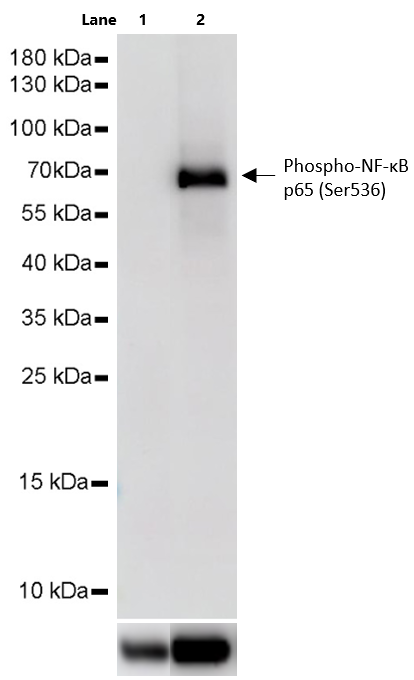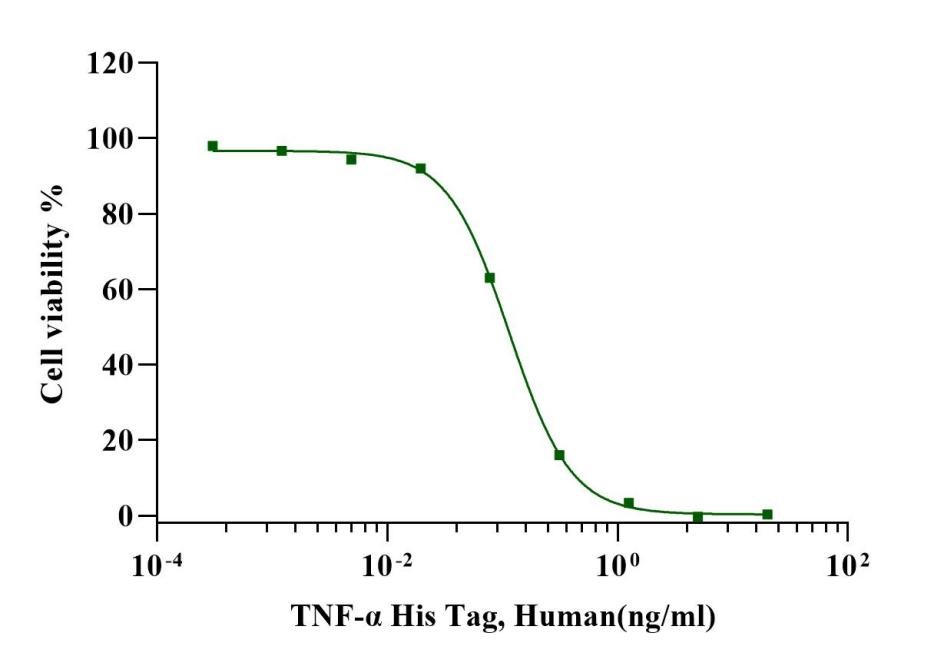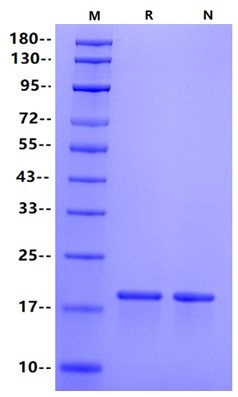Product Specification
| Species |
Human |
| Synonyms |
TNF-α, Cachectin, Tumor Necrosis Factor-Alpha, TNFSF1A |
| Accession |
P01375 |
| Amino Acid Sequence |
Val77-Leu233, with N-terminal 8*His
MHHHHHHHHVRSSSRTPSDKPVAHVVANPQAEGQLQWLNRRANALLANGVELRDNQLVVPSEGLYLIYSQVLFKGQGCPSTHVLLTHTISRIAVSYQTKVNLLSAIKSPCQRETPEGAEAKPWYEPIYLGGVFQLEKGDRLSAEINRPDYLDFAESGQVYFGIIAL |
| Expression System |
E.coli |
| Molecular Weight |
18.5kDa |
| Purity |
>95% by SDS-PAGE |
| Endotoxin |
<1EU/μg |
| Conjugation |
Unconjugated |
| Tag |
His Tag |
| Physical Appearance |
Lyophilized Powder |
| Storage Buffer |
20mM Tris, 150mM NaCl, 2mM TCEP, pH8.5 |
| Reconstitution |
Reconstitute at 0.1-1 mg/ml according to the size in ultrapure water after rapid centrifugation. |
| Stability & Storage |
· 12 months from date of receipt, lyophilized powder stored at -20 to -80℃.
· 3 months, -20 to -80℃ under sterile conditions after reconstitution.
· 1 week, 2 to 8℃ under sterile conditions after reconstitution.
· Please avoid repeated freeze-thaw cycles.
|
| Reference |
1、Hector J. et al. (2007) TNF-alpha alters visfatin and adiponectin levels in human fat. Horm Metab Res. 39(4): 250-255.
2、Berthold-Losleben M. et al. (2008) The TNF-alpha System: Functional Aspects in Depression, Narcolepsy and Psychopharmacology. Curr Neuropharmacol. 6(3): 193-202.
|
Background
Tumor necrosis factor α (TNF alpha) is an effective pro-inflammatory cytokine, which can kill and inhibit tumor cells. It is mainly produced by activated macrophages and can also be secreted by other types of cells, such as CD4+ lymphocytes, NK cells, neutrophils, mast cells, eosinophils and neuronal tissues. The members of TNF alpha family exert their cellular effect through two distinct surface receptors of the TNF receptor family, TNFR1 and TNFR2. The pleiotropic biological effects of TNF can be attributed to its ability to simultaneously activate multiple signaling pathways in cells. TNF-induced NF-κB activation promotes the growth, invasion and metastasis of cancer cells.









